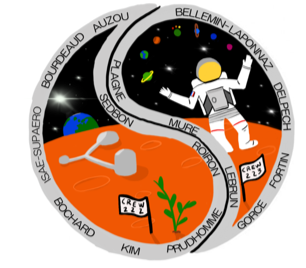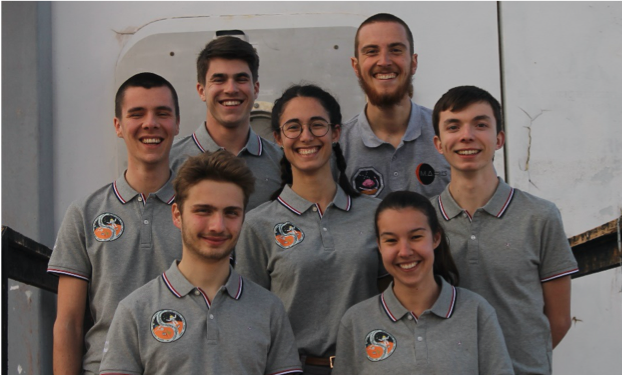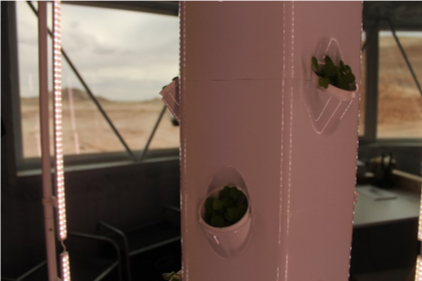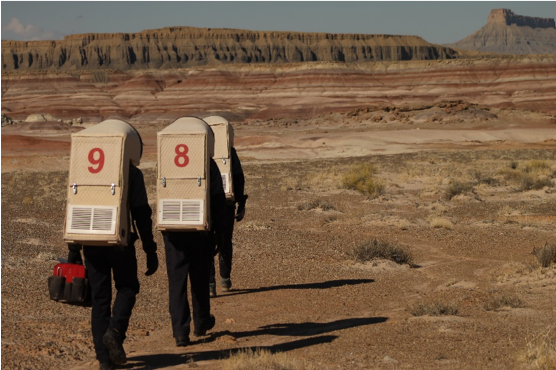Mission Summary – Crew 223
 Our mission could be summed up in one word: adaptability. During those two weeks, we had to adapt to a whole different planet. The way we fed ourselves was different, our daily routines changed, the landscapes we saw were completely foreign. We had spent the entire year preparing for this mission with the previous crew (Crew 222), but it still was very different from all our expectations. We have learned a lot about how to live on Mars, science and friendship. We have learned how to evolve in an environment that we did not know and was sometimes dangerous. We got used to the Hab and this incredible station that we discovered on our first day.
Our mission could be summed up in one word: adaptability. During those two weeks, we had to adapt to a whole different planet. The way we fed ourselves was different, our daily routines changed, the landscapes we saw were completely foreign. We had spent the entire year preparing for this mission with the previous crew (Crew 222), but it still was very different from all our expectations. We have learned a lot about how to live on Mars, science and friendship. We have learned how to evolve in an environment that we did not know and was sometimes dangerous. We got used to the Hab and this incredible station that we discovered on our first day.

We are a crew of students coming from ISAE-SUPAERO, an engineering school in France, and we prepared this mission with the second crew of our school, the Crew 222.
Food and plantations:
Food is a key aspect of Martian life and not only because it is a bare necessity for humankind. It has an important influence on human physical and psychological health. During the two weeks we spent in the MDRS, we exploited at best the production that could be harvested from the GreenHab. And it gave us a huge improvement on our daily habits:
- Since most of Martian food is dry, having to harvest some fresh herbs and vegetables was a relief for most of us. It was essential to be able to gather some lettuce for a fresh salad or some zucchini flowers for an original meal. Having a place to grow crops is essential to the good mood of the crew and the well-being of their digestive system.
- The GreenHab is the secret garden of our station, it looks like no other place. Supervised by our GreenHab Officer, we were able to grow crops such as wild rocket, spinach, cucumbers, sweet pepper, radishes, tomatoes, swiss chard… We also had an experiment testing the influence of music on plants. In fact, if we need a lot of crops to grow with few resources on Mars, it is essential to enhance the growth rate of the plants. Valentin experimented on radish to see if some precise noise sequence would enhance the production of proteins inside the plant.
- We also tested a new type of plantation. Thanks to the Aerospring tower, we tested a vertical plantation and grew lettuce into foam. It allows to cultivate out of soil with a circular system of water and it is all lightened by LEDs. It was efficient to grow lettuce, but it is hard to quantify its efficiency because our two weeks mission was too short to see a significant different.

Daily routine and protocol:
Martian life is sequenced by strict protocol that must be the best for the health of the astronauts and the procedures of the experiences.
- Our daily routine started with sports, then EVAs according to the weather and in the afternoon, we had a lot of time for experiments in the science dome or in the Hab. Having a day timed precisely helped us to get used to this different lifestyle. The protocols for EVAS are timed due to the depressurization and pressurization and because of the danger of going out on Mars.
- On Mars resources are limited. We had to be aware of every kind of resource we were using and how we were using it. We changed the way we used water, not consuming it for showers or dish washing. Water is used daily but more than ever it must be preserved because it is limited and so hard to get on Mars. We preserved it so well that we only used only 7 Liters per person and per day. Aurélien and Benjamin, the commander of the crew 222 worked together to simplify the way we count water and give a visual signification of water use.
Human factors and teamwork experience:
Living as a crew is not always easy, but it is a key point for the success of the mission. During the two weeks, we learned a lot about each other, about cohesion and about communication.
- Marion held two different experiments on communication. The first one consisted to test our communication in a foreign language by building LEGOs. And the second one consisted in testing our communication in situation of stress.
- We worked a lot on team building through relaxation and positive psychology. It helped calm the stress of the crew members when they were having a hard time. It also helped understanding the dynamic of the Crew. We had a functional yoga program to get rid of the cramps after the EVAs. The conclusion on this experiment is that creating a safe space where everyone feels good helps a lot the efficiency of the mission.
Necessity on Mars and future exploration:
Although it is very exciting to go and explore Mars, this is the most dangerous part of going on another planet. You can become very aware of the danger and the fragility of your own life, when being in a suit in the middle of a desert with no communication.

- During EVAs, we realized that having a functional life support was essential, so Aurélien and Luc spend a lot of time making sure that our life support would be functioning under any circumstances. They also worked our own life support that was supposed to be tested during the mission. Unfortunately, it was still a bit unsafe to test it, even after two weeks of improvements. We also tested the efficiency of communication in these dangerous situations. In fact, after an EVA where one of the Crew members had lost her earplug, we created a protocol only using sign language. We were able to test its efficiency during two EVAs and concluded on the necessity of having a coded language in case of emergency.
- During our exploration, we realized that the shapes of Mars can be anything but what was expected so it is essential to understand the environment around the station. We had to experience working on a better understanding of our environment. The LOAC is a system that measure the particles in the air in order to better understand the climate. And the MegaARES measures the electrical field on the ground. The results will be analyzed by the the laboratory Laboraton and the scientist Jean-Baptiste Renard back in France.
- Last but not least, discovering the universe on Mars is perspective that gives a new exploration point of view. Studying the sky would be useful for further space exploration to be able to observe the sun and be aware of any solar storm. Florian was able to observe the sun and searched for supernovas during the nights. He was able to make all the observations and he will analyze the results back at ISAE-SUPAERO with Eishi, the Astronomer of the Crew 222.
As a conclusion, I would say that we grew up and realized that no matter where you are in the galaxy, it feels good to have a place one can call home.


You must be logged in to post a comment.